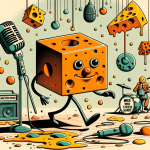While once limited to only the most high-tech companies, 3D printers are becoming increasingly more common in many smaller businesses and even in the home. Able to print anything and everything, from violins to prosthetic limbs, they are a fantastic resource which everyone can now take advantages of. Here are some of the fantastic advantages of 3D printers.
Prototypes
Rather than pay a third party to produce an expensive prototype, all you would need to do is upload a plan and the printer would get to work. This is a fantastic way to work on a prototype as it means that you can quickly have what you need at a much lower cost than if you had to find a manufacturer who could accommodate for an order of 1 instead of an order for 1000.
For example, making a PCB with a 3D printer allows someone to fully test where the various components of a PCB would fit before committing to mass-production.
Cost Effectiveness
Running a 3D printer is often far more cost-effective than traditional means. If you consider that a traditional model will have to pass through maybe four or five different hands on the production line, that quickly adds up to quite a high labour cost. You then also have to consider materials used. One could try digital printing flexible packaging. However, if many different materials were used in the construction, this is another cost.
3D printers can use many materials but the most common is a plastic filament. This is low-cost and affordable, while also being available in every colour you could think of.
Speed
One of the major advantages of 3D printers is the speed with which they can print goods. A small design could take less than an hour while even intricate, larger designs could only take a few days. If you have a small turn-around time for prototyping or initial testing, 3D printing might be the solution you need. For eg: if you have a business for beef jerky packaging, you need a quick turnaround time for the perishable goods. Here also, 3D printing would help.
Less Waste
Since you are printing the design either as one, finished design or in multiple parts to click together, 3D printed materials have very little waste associated with them.
Compare that, instead, to materials made from wood or metal. You would start with a basic piece and then shape it and drill it as needed, all the while producing waste that can’t be used. Even if you re-use the larger waste, there will be small shavings which can never be reused. A 3D printed component can be printed with all holes already intact. It is a fantastic resource for the eco-friendlier manufacturer.
If You Can Think It, You Can Print It
Finally, the absolute advantage of 3D printers is the sheer customization available. It doesn’t matter whether the item is geometrical or organic in shape, or how complicated it may be, if you can make a CAD model of it, it can be 3D printed. It is no wonder that so many manufacturers are beginning to print both prototypes and actual components using the amazing innovation that is the 3D printer.











